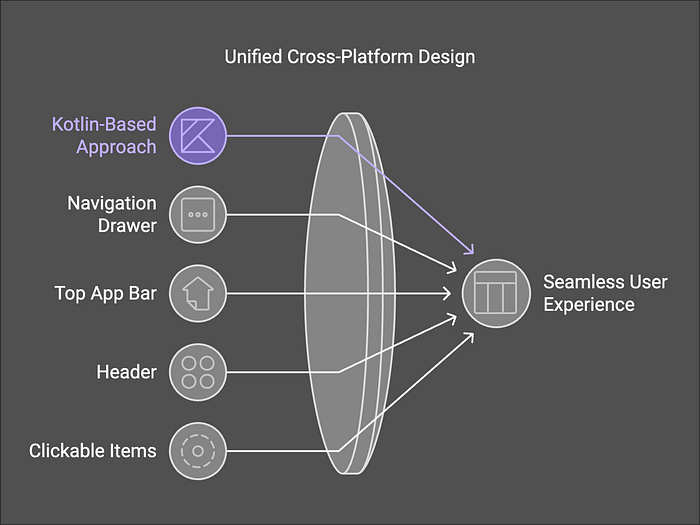Member-only story
Navigation Drawer in Compose Multiplatform

Jetpack Compose Multiplatform is transforming the way developers create cross-platform applications, offering a unified Kotlin-based approach to building dynamic and responsive UIs. Among the essential components of modern apps, the navigation drawer stands out as a powerful tool for organizing and accessing app features efficiently. This guide explores how to implement a sleek and functional navigation drawer in Compose Multiplatform, complete with a top app bar, a header, and clickable navigation items. Whether you’re targeting Android, iOS this approach ensures a seamless user experience across all platforms.

1. Entry Point with @Preview
The App function sets up the app’s theme and previews the HomeScreen:
@Composable
@Preview
fun App() {
MaterialTheme {
HomeScreen()
}
}2. Home Screen with Scaffold
This is the main screen, combining the top app bar, navigation drawer, and content
@Composable
fun HomeScreen() {
val scaffoldState = rememberScaffoldState()
val scope = rememberCoroutineScope()val navItems = listOf(
"Search" to Icons.Default.Search,
"Refresh" to Icons.Default.Refresh,
"Favorites" to Icons.Default.Favorite,
"Settings" to Icons.Default.Settings,
"About" to Icons.Default.Info
) Scaffold(
scaffoldState = scaffoldState,
topBar = {
TopAppBar(
title = { Text(text = "Dictionary") },
navigationIcon = {
IconButton(onClick = {
scope.launch {
if (!scaffoldState.drawerState.isOpen) {
scaffoldState.drawerState.open()
}
}
}) {
Icon(Icons.Default.Menu, contentDescription = "Menu")
}
}
)
},
drawerContent = {
DrawerContent(navItems) { selectedItem ->…

